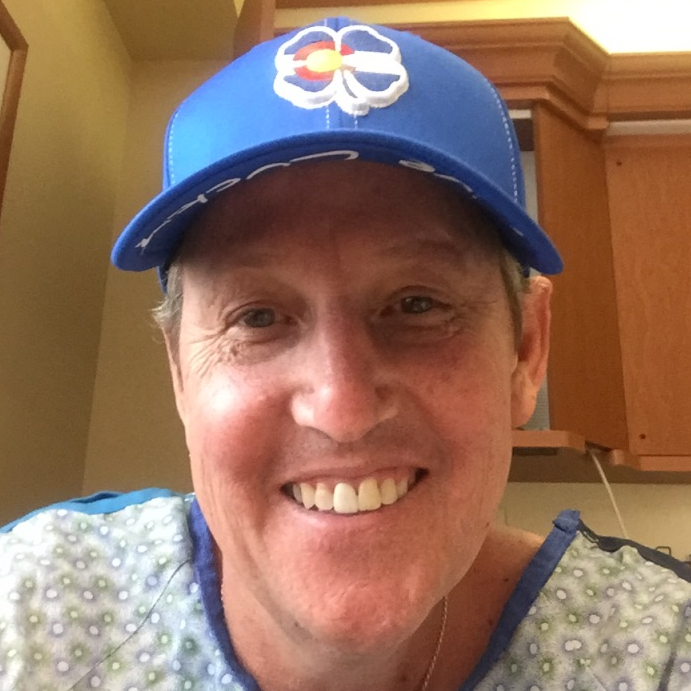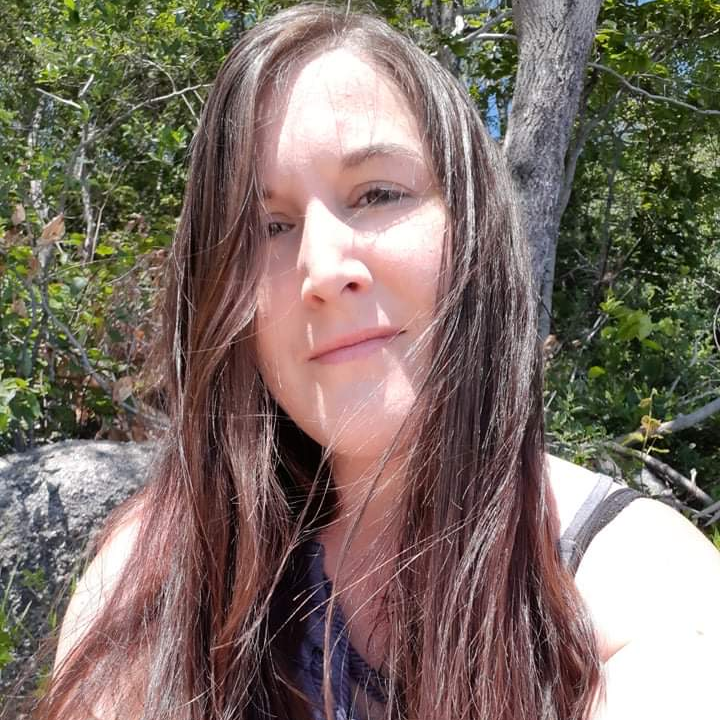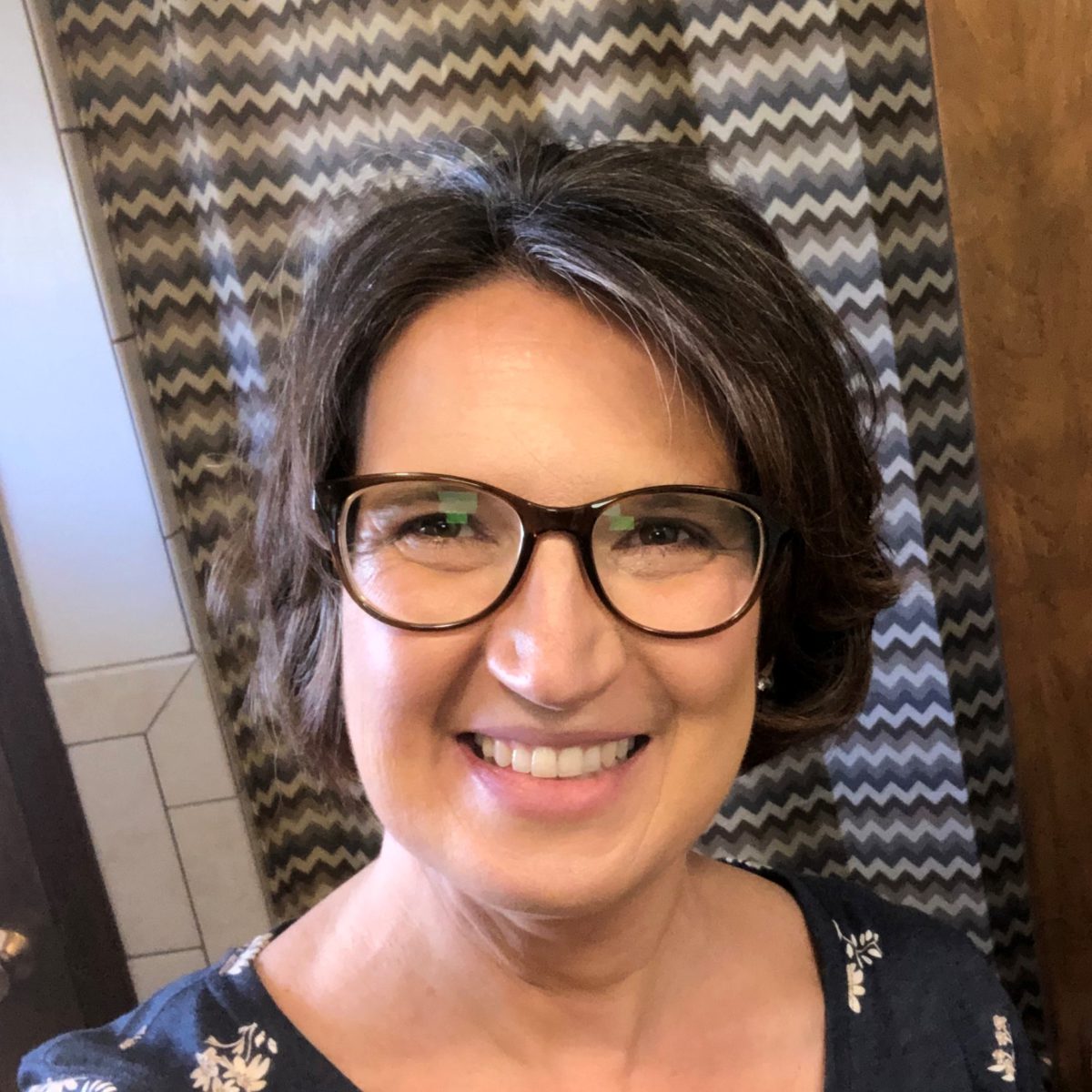Laura’s IgG kappa Multiple Myeloma Story
Interviewed by: Stephanie Chuang
Edited by: Katrina Villareal
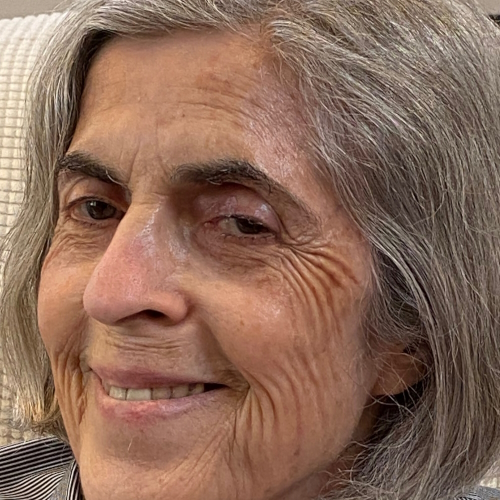
Laura, who was diagnosed with multiple myeloma in her late 60s, reflects on her experiences. As a former lawyer, she shares her journey from the shock of the diagnosis in 2012 to her various treatments, including participation in clinical trials.
She highlights the importance of having a supportive and knowledgeable doctor. She delves into the complexities of different treatments, including CAR T-cell therapy and bispecific antibodies.
Laura also discusses the challenges and adjustments in her life due to the diagnosis, the impact on her husband as a caregiver, and the importance of staying connected with the myeloma community. In this interview, Laura emphasizes the significance of having new treatment options and the support of a reputable medical facility.
In addition to Laura’s narrative, The Patient Story offers a diverse collection of multiple myeloma stories. These empowering stories provide real-life experiences, valuable insights, and perspectives on symptoms, diagnosis, and treatment options for cancer.
- Name: Laura E.
- Diagnosis:
- Multiple myeloma, IgG kappa
- Symptom:
- Increasing back pain
- Treatments:
- VRd (Velcade, Revlimid, Dexamethasone) (August 2012)
- Zometa (for bones)
- Stem cell transplant (March 2013)
- CyBorD (Cytoxan, Velcade, Dexamethasone)
- Cleave study (didn’t last long)
- Carfilzomib & panobinostat
- CD47 study
- Dara-Rd (Daratumumab, Revlimid, Dexamethasone)
- VenVd (Venetoclax, Velcade, Dexamethasone)
- PCd (Pomalyst, Cytoxan, Dexamethasone)
- Pomalyst, Bendamustine, Dexamethasone
- Bendamustine, Dexamethasone
- CAR-T trial BB2121 (October 2018)
- Pomalyst, Daratumumab, Dexamethasone
- CAR-T trial with GSI (Summer 2019)
- Pomalyst, Keytruda
- Cytoxan, Dexamethasone
- Teclistamab trial with Daratumumab (2020)
- Talquetamab trial with Daratumumab (2021)
- Selinexor and Carfilzomib
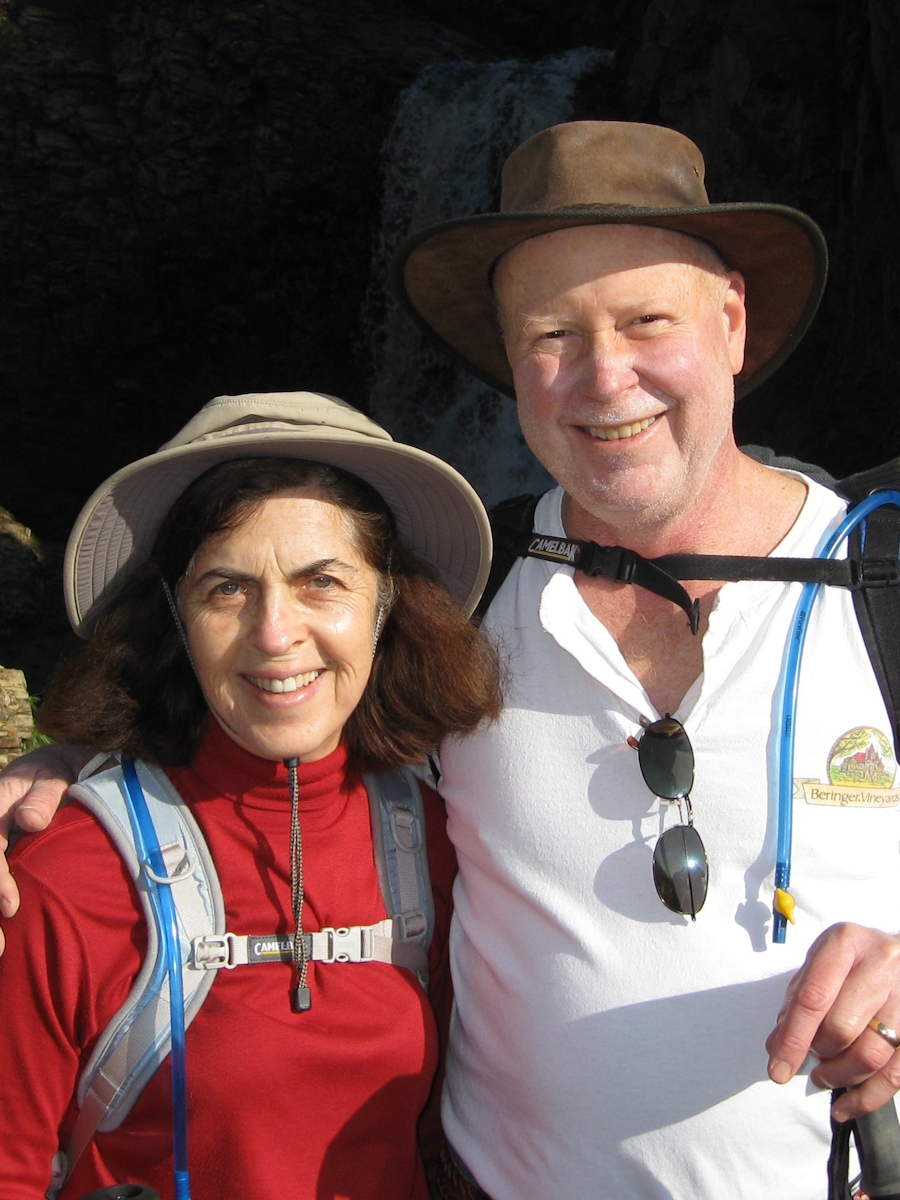
This interview has been edited for clarity and length. This is not medical advice. Please consult with your healthcare provider to make informed treatment decisions.
The views and opinions expressed in this interview do not necessarily reflect those of The Patient Story.
Introduction
I’m getting up there in years. I can’t believe I’m this old, but here I am, almost 78, and have had a pretty full life.
I was a lawyer. I have a son that I adopted as a single parent and then I got married.
I lost my first husband to cancer. We think it was stomach and liver cancer, but by the time it was discovered, it wasn’t entirely clear.
My second husband was somebody I’ve known since I was 15. We have a wonderful relationship and he’s been a wonderful companion in this journey with multiple myeloma. We lost touch for some years and we had some good friends who, at some point, decided that we should get together. They plotted to get us together and it worked.
My primary care physician said, ‘You have multiple myeloma and it’s treatable. I have patients who’ve lived for 10 and 20 years with this disease.’ I felt a lot better.
Diagnosis
Getting the Diagnosis
I was diagnosed in 2012.
The attending doctor at the emergency room wanted to give me a prescription for physical therapy and send me home. I said no. It wasn’t fair to the physical therapist to have to figure out what the problem was. She left the room and sent a younger doctor in after a while.
The younger doctor said I had two choices. One was the option I’d already refused and the other was to have a CT scan so I thought I’d have that one.
Meanwhile, the shift changed. The next attending physician came in and told me I had cancer. This was in the emergency room in the middle of the night. I went home with my husband and left a message for my primary care physician.
After a long day of seeing patients, he called me at about 8 o’clock in the evening. He said, “You have multiple myeloma and it’s treatable. I have patients who’ve lived for 10 and 20 years with this disease.” I felt a lot better. It didn’t relieve all of the bad feelings about having a cancer diagnosis, but it certainly made me feel better than what the first doctor had said.
When my primary care physician told me that it was treatable, it made a difference in how I felt about it.
Reaction to the Diagnosis
Even though I’d had some experience with cancer before, it still came as a terrible shock when I was told I had it. I wanted to press the reset button and have this not happen, but that’s not possible.
We were both devastated. I’d never even heard of this disease. My husband had, oddly enough. His father had had it so he knew a little about it.
I’m still doing okay. I keep having new treatments. They only last for a fairly short time with me. If it’s a good treatment, it lasts a year or less. If it’s not such a good treatment, it might not even last that long.
When my primary care physician told me that it was treatable, it made a difference in how I felt about it. It wasn’t nearly as scary. I accepted what he said and felt a lot better.
When you’ve had as many treatments as I’ve had, sometimes you come to a point where it’s difficult to know what the next step is.
Seeing a Myeloma Specialist
Because my husband knew about this disease, he met Dr. Durie at the International Myeloma Foundation and asked, “Who should we get to treat Laura?” He gave us Dr. Martin’s name so we managed to get in to see him and he took me as a patient. He wasn’t nearly as famous in 2012 as he is today. He’s been my doctor all along and I’m really glad.
I feel like he’s done right by me. When you’ve had as many treatments as I’ve had, sometimes you come to a point where it’s difficult to know what the next step is. He always has my best interest in mind. He knows a lot. He’s a really good doctor.
Once when I needed a new treatment, he told me that he had nothing to offer me so he helped me get on waiting lists at three other hospitals. When one of them came through, he encouraged me to take it and I did. He had my interest at heart.
Treatment
I started my first treatment in August 2012. They call it VRd. It’s a pretty common first treatment. They’re starting to change the usual first treatment, but for a long time, that was the first treatment almost everyone got. Unless you had a terrible reaction to one of the treatment drugs, you had VELCADE, REVLIMID, and dexamethasone, and that went on for several months.
I didn’t know much about clinical trials until I got involved.
Joining Myeloma Clinical Trials
I’m not sure exactly how many treatments I’ve had because there have been some changes that may or may not have been a separate treatment. I think I’ve had about 16 different treatments, 12 of which were clinical trials.
There were a couple of clinical trials near the beginning of my treatment that only lasted a month or two. He took me off them because they weren’t benefiting me.
I didn’t know much about clinical trials until I got involved. I know there are some misconceptions that a lot of people have, especially whether you’re going to get the study drug. In phase 1 and phase 2 trials, you get the study drug. I’ve only had phase 1 and phase 2 trials so I know I’m getting the drug that’s been described to me.
On more than one occasion, when it came time that I needed another treatment because the one I had been taking had stopped working, Dr. Martin would explain to me what the options were.
We’d have a meeting where he’d explain to me the possibilities. Typically, if I didn’t already have a pretty good idea of what I wanted, I would ask him which one he preferred for me. He’d tell me which one he thought was best and I’d usually go with his recommendation. He wouldn’t insist on it. He would only tell me his preference when I asked him.
It’s good to be near where you can not only get help but that has all of my records and access to the information that a doctor would need to deal with whatever the problem is.
Factors to Consider When Deciding to Join a Clinical Trial
Efficacy is, of course, very important. Sometimes side effects affect my preference but not often. I don’t even know how those side effects are going to feel until I experience them.
One of my other health issues is gastrointestinal issues so if a treatment is going to affect my GI, I would want to know about it and evaluate how that affects my choice. It won’t necessarily prevent me from entering into that trial, but it’ll be a consideration.
I’ve only traveled once and that was when Dr. Martin didn’t have an option for me. I prefer to stay at UCSF for several reasons, one of which is that if I have side effects, that can be addressed right away.
Side effects can be relatively minor or they can be major. There have been occasions when my husband puts me in the car late at night and takes me to the emergency room. It’s good to be near where you can not only get help but that has all of my records and access to the information that a doctor would need to deal with whatever the problem is. That’s important.
When I did go to another hospital, it was in Seattle and now my Seattle records are connected to my UCSF records. I have a doctor in Seattle, too. I don’t see him anymore, but that connection is very important. Being someplace where they know enough to know what to do is key.
You want to know about the experience of other people who’ve been in this clinical trial.
Extra Considerations in Traveling for a Clinical Trial
Seattle makes it easy for you. At the time, it was called the Seattle Cancer Care Alliance. The same place is now called Fred Hutchinson. They arrange housing for you and they have a shuttle that takes you to the clinic and the store.
I went there alone and didn’t think I needed a caregiver right away. One day, they told me that I needed a caregiver for a particular test that I had to undergo. I was living with other myeloma and cancer patients. They didn’t have anything to do except go to the clinic so there were lots of people who volunteered to help me that particular day.
Eventually, my husband had to come. I spent two and a half months in Seattle for this. He was there for maybe two months, I’m not sure exactly.
Clinical Trial Paperwork
They always send you a copy of the paperwork before you decide to join the clinical trial so you have a chance to look it over. I know that some people might find it daunting, but one of the things they have in that consent form is a list of the possible side effects. You can read all about it and ask questions before you sign.
I know where to look for all this so I go straight to it and ask questions. It’s easy to understand. It’s surrounded by a lot of other words, but if you find the possible side effects, that’s what you want to look at and ask questions about.
You want to know about the experience of other people who’ve been in this clinical trial. In Seattle, they told me that one of the participants had died so I wanted to know about her health. After they explained it all to me, I decided that I was considerably healthier than the patient who had died and it was going to be okay.
Expenses Related to Clinical Trials
My insurance paid for just about everything that the trial didn’t pay for. The sponsor will pay for anything new. Your insurance will pay for other things that have to be done anyway.
The most expensive was travel to Seattle and housing in Seattle. I had to pay for that.
My first CAR T didn’t work so well for me and we’re not entirely sure why.
CAR T-cell Therapy
I joined a CAR T trial in 2019.
The great thing about CAR T is if it works for you, it’s one and done. Once you’ve had the treatment, you don’t need treatment again for a while.
Like a lot of us, the treatment doesn’t last forever. It lasts for a while and you don’t have to keep coming back for additional infusions or anything like that. If it works, it’s great.
My first CAR T didn’t work so well for me and we’re not entirely sure why. It brought my numbers down, but not enough so I still needed treatment.
One theory is that I’d had bendamustine before, which might have made it difficult for the CAR T to work, but I don’t think anybody knows if that’s the answer.
Like a lot of us, the treatment doesn’t last forever.
Preparing for CAR T-cell Therapy
They take the T cells out of your body by running your blood through this contraption, which has a centrifuge that can separate the T cells from your blood and give the rest of it back to you. To do that, they put this giant thing in your neck to get the blood out and that’s just annoying, but it’s not terrible.
They put the re-engineered T cells back into you and look for the side effects. Neurotoxicity and CRS, which means cytokine release syndrome.
I had a very strong reaction to my second CAR T. I had a day when I was completely out of it. They tell me I couldn’t answer simple questions like, “What’s your name?” I don’t remember a thing from that day. All of my organs were affected. They were afraid that I’d had a heart attack, but I didn’t. It was a very strong reaction.
It worked. I’m not sure how long for exactly, but it was about a year.
I cope with this kind of uncertainty reasonably well. Not everybody does, I suppose.
Comparing CAR T-cell Therapy to Other Myeloma Treatment Options
CAR T is over so quickly compared to the others.
I did have a problem that showed up right after the treatment. I got parvovirus, which doesn’t affect most people, but it caused me to need IVIG. That takes care of the problem, but it complicates our ability to measure how well I’m doing.
If you put a lot of IgG into my body, it looks like there’s more cancer, but there isn’t. It’s not cancer. It took a little longer to figure out that it worked as well as it did, but it did work.
Dealing with the Wait
I cope with this kind of uncertainty reasonably well. Not everybody does, I suppose. For example, I think this is harder on my husband than it is on me sometimes because he has a completely different personality.
I’m optimistic and I believe that Dr. Martin is doing something that’s going to work for me. Now, my husband believes that Dr. Martin is doing right by me, too, but he’s naturally not as optimistic.
Like most patients, I get checked regularly so it’s not a big surprise when a treatment stops working. When my M protein reaches 1.0, it looks like another treatment is under consideration. We start thinking about it even before we reach that point.
Bispecifics are a very good choice, especially if you can get them at your home medical center.
Bispecific Antibodies
I’ve been on two of them so far.
He described all the options that were available at that point. He first recommended teclistamab. The second one was talquetamab, which hasn’t been approved yet.
Teclistamab was a good treatment, but I don’t remember the specifics. I think I was on teclistamab for the better part of a year.
I remember talquetamab better because it was problematic. Some of the side effects of talquetamab were annoying. The target molecule was something that was not just on myeloma cells but also on fingernails, toenails, and the tongue. Some people lose their fingernails altogether and food doesn’t taste the same. That was pretty annoying.
Bispecifics are a very good choice, especially if you can get them at your home medical center. Some new ones are coming out that I haven’t tried yet.
It didn’t affect everybody the same way, but I couldn’t stand eating blueberries and pears.
Side Effects of Bispecific Antibodies
The fingernails weren’t so terrible. The palms of my hands and the bottom of my feet also got a little red and peeling, but that’s not so terrible. I only lost a part of my fingernails and toenails. But the taste buds affected my everyday life because there were things that didn’t taste right.
It didn’t affect everybody the same way, but I couldn’t stand eating blueberries and pears. They tasted salty to me. I didn’t like anything spicy because it was very harsh to me. It affected what I would be willing to eat and eating is an important part of your life.
It was very unpleasant and I didn’t like it, but it didn’t cause me to stop treatment. I persisted, but I was annoyed all the time. Other people had different changes to their taste buds. Some people liked having hot foods and wanted them all the time.
It still caused a lot of nausea and throwing up so I had to stop because I was losing a lot of weight.
Selinexor & Carfilzomib
I was on it for about two months.
Selinexor also had a negative effect on my taste buds. I was given prescriptions for several anti-nausea drugs, but it still caused a lot of nausea and throwing up so I had to stop because I was losing a lot of weight. Not only was the food not tasting very good, but I couldn’t keep it down. But it kept my numbers down for a long time, even though I stopped taking it.
Dr. Martin and the nurse practitioner knew. I would come in regularly and one of the things they always do is weigh me and it was obvious. My weight was going down. At some point, Dr. Martin and I came to the conclusion about the same time that I really shouldn’t be taking selinexor anymore so he took me off.
It’s a nice holiday. I know it’s not going to last and that’s okay.
Treatment Holiday
My numbers have stayed down for so long even without treatment. At first, he only took me off selinexor. I was taking another drug with it at the same time and he took me off that, too.
I haven’t had treatment since November 2022, but I’m going to need treatment again soon. My antibodies are good so I don’t feel like I’m in danger every time I walk out the door. It’s been fine.
It’s a nice holiday. I know it’s not going to last and that’s okay. But it’s a nice thing to be able to do and to be able to do it at a time when I’m not too worried about COVID because my antibodies are good. I don’t want to get it. I’ve had it once, but I feel like I can enjoy a holiday.
I feel some freedom that I didn’t have for a while. Getting myeloma treatments usually means that there’ll be a problem with antibodies again, a problem with white cells. I’ll have to be more careful.
The diagnosis didn’t change my life nearly as much as the pandemic… The worst part is I don’t get to see my grandchildren much.
Living Life with Myeloma
A lot of people have given up masks and I’m not talking about myeloma patients. They think it’s a little odd when people continue to use them. I do what I need to do, but I feel a lot freer walking around without one nowadays. I know when I start treatment again, I’ll have to be careful again. That’s okay.
I’m satisfied with how my life is going. I’ve come to know some people in this journey that I like very much and it’s a very important part of my life now. I do other things. I have a nonprofit that I do a bunch of things with. Most of the meetings that I go to, I do on Zoom. Hardly anybody ever sees me in person, but occasionally they do.
I have a lot of friends in this community. People I meet when we have a support group meeting are people I keep up with. We might not go out to dinner together, but I feel like I know them and care about them. They’re people I’ve gotten to know and care about. We happen to have the same disease, but what’s important is that we met.
The diagnosis didn’t change my life nearly as much as the pandemic. My husband and I did some traveling. I wasn’t working full-time anyway. I moved from Virginia to California so I wasn’t practicing law. I was doing some arbitrations and I still do.
After the pandemic set in in early 2020, I couldn’t travel and that’s made more difference than having myeloma. Or having myeloma alone anyway.
I don’t think I’ve changed too much. The lawyer you meet today isn’t that much different from the lawyer who existed before. I have this disease and it limits me. The pandemic limits me, but I still get up every morning and do things that I like to do so that’s good.
The worst part is I don’t get to see my grandchildren much. My grandson, who was 13 last summer, visited me all by himself. He was great. He followed my instructions, got a COVID test, and wore glasses and a mask on the plane. He wanted to make the trip and had a good time. His little sister was extremely jealous, but she was too little to make the trip by herself. That will have to wait for a while.
Sometimes I think it’s harder for the caregiver than it is for the patient.
Husband as Caregiver
He has been such a loyal caregiver. Recent changes have been more important in a way because it’s been such a long, hard journey for him. More than half of our marriage has been consumed with multiple myeloma and it’s affected his life at least as much as mine.
Sometimes I think it’s harder for the caregiver than it is for the patient. In our situation, I’m the one who makes decisions about my care. I listen to my husband because he comes with me most of the time. He has opinions, too, but I get to make the decision and he doesn’t. That’s much harder on him and I understand that.
It’s also coming at a time when we’re losing friends. This has happened to him more than it has to me. A lot of his friends have died these past 10 years and it becomes lonelier and lonelier when you don’t have your friends around. He still has some who are still living, but it’s making his life harder.
Having a wife with this terrible disease doesn’t help because I can’t help him with some of these things. We need to acknowledge that. Everybody works out these issues their way, I think.
Importance of Having New Treatment Options
I’ve had most treatments so I can run out of options. I don’t think I’ll run out of options completely, but it’s a little worrisome. I want UCSF to stay ahead of what I need.
If I have to, I could go somewhere else. It’s not my preference because I think it’s much better to be able to stay in my home medical facility.

Inspired by Laura's story?
Share your story, too!
More Multiple Myeloma Stories
Clay D., Relapsed/Refractory Multiple Myeloma
Symptoms: Persistent kidney issues, nausea
Treatments: Chemotherapy (CyBorD, KRd, VDPace), radiation, stem cell transplant (autologous & allogeneic), targeted therapy (daratumumab), immunotherapy (elotuzumab)
...
Melissa V., Multiple Myeloma, Stage 3
Symptom: Frequent infections
Treatments: IVF treatment & chemotherapy (RVD) for 7 rounds
...
Elise D., Refractory Multiple Myeloma
Symptoms: Lower back pain, fractured sacrum
Treatments: CyBorD, Clinical trial of Xpovio (selinexor)+ Kyprolis (carfilzomib) + dexamethasone
...
Marti P., Multiple Myeloma, Stage 3
Symptoms: Dizziness, confusion, fatigue, vomiting, hives
Treatments: Chemotherapy (bortezomib & velcade), daratumumab/Darzalex, lenalidomide, revlimid, & stem cell transplant
...
Ray H., Multiple Myeloma, Stage 3
Symptoms: Hemorrhoids, low red blood cell count
Treatments: Immunotherapy, chemotherapy, stem cell transplant
...
